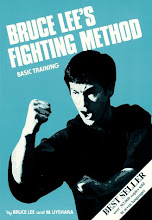
Inside Kung Fu Magazine
A martial art is no less culture dependent than any of the other systems. In this case, it is about the praying mantis system of the people of a particular region of South China, and its practitioners in particular. Because I assume that most readers are familiar with the basic concepts of the Chinese martial arts so I shall briefly describe those which pertain to Jook Lum praying mantis. It is an internal system built around and constructed from the principles of chi gung. In its movements, it copies and stylistically embellishes the hand motions of the praying mantis while the footwork is patterned after the antics of the monkey.
Specifically, like the mantis, elbows are the critical fulcrum through which an opponent's attacks are controlled and countered. These are held tightly toward the centerline in front of the body, and through circular movements frequently combined with "sticking" hands, the opponent is quickly dispatched. The more advanced one becomes, the more subtle and elegant the movements, as in any other art form. The beginners' movements may be likened unto the pottery of the Ming, whereas those of the masters are not unlike the pottery of the Southern Sung.
Training begins with the horse stance; we all know the metaphors about houses and foundation. Ours is a tight stance with the toes pointed inward and the right foot approximately one-half step in front of the left. This permits rapid weight shifting and quick movement. When the student demonstrates some comfort with this (and believe me, it is not an easily acquired body posture), he begins to learn the hand techniques. All the while there are the chi gung breathing exercises which precede every lesson. From the day one begins this system until, presumably, the day of extinction one practices the chi gung. Within the rarefied circles of the highest levels of gung-fu, the grandmaster of this system, Lum Sang (often referred to as "Monkey") is famous for his chi gung. Those who have been involved with the martial arts for awhile know many wonderful stories that are associated with great masters and those that concern Lum Sang's chi gung are fabulous in every sense of the word. I might say that it is these stories that contribute to the palpable texture of a system: for gung-fu is not just temple boxing.
Speed
Speed in fighting depends not
just on your hands and feet in swiftness..
But other attributes such as
nontelegraphic moves and awareness.
Speed in fighting is to hit
your foe without yourself being hit.
This can only be done by hours
of practice and being completely fit.
Speed in fighting is no good
without the power that goes with it.
Monday, December 25, 2006
Jook Lum Praying Mantis
Subscribe to:
Post Comments (Atom)








0 comments:
Post a Comment